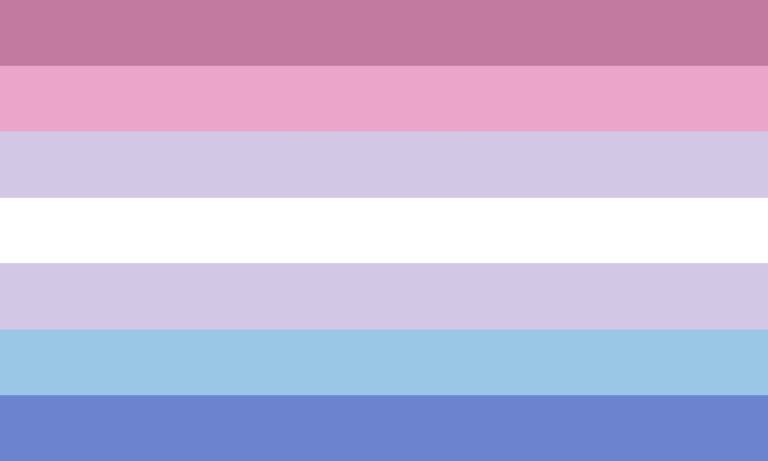The prefix bi-, as in bisexual, means two or multiple. Bigender people identify with two or multiple genders, generally identifying with both masculinity and femininity. Some bigender people feel that they are equally masculine and feminine all the time, while others fluctuate between the two. For some, the masculine and feminine parts of themselves are very separate, while for others they co-occur in harmony with each other.
Bigender is a gender identity where people identify with two or multiple genders, generally feeling a mixture of masculine and feminine at the same time.
Bigender is generally considered to exist under the non-binary umbrella, because it doesn’t fit into either the traditional boxes of ‘man’ and ‘woman’. Bigender is also called a ‘multigender’ identity, because it encompasses multiple genders at the same time. It also comes under the broader trans umbrella, because children are generally not assigned as ‘bigender’ at birth on their birth certificates, so it is always different to the gender assigned at birth.
Download HER
Some people assume that all bigender people are bisexual, but that’s not the case. Bigender people can be any sexuality, whether that’s bisexual, asexual, lesbian, sapphic, gay, queer or anything in between. Remember- gender and sexuality are two completely separate things!
What do bigender people look like?
Bigender people are as diverse in terms of their sexuality, presentation and pronouns as any other identity on the gender spectrum. While some bigender people move between presenting femme and presenting more butch, some present more androgynously. It’s best just to ask what someone’s gender and pronouns are if you’re not sure!
The bigender flag
The bigender flag is made up of two different pink stripes, two different blue stripes, two lilac stripes and a white stripe in the center. Similar to the transgender flag, the use of traditionally gendered colors like pink and blue represent male and female, with lilac and white representing the mixture between male and female. The white stripe is included in all flags under the non-binary umbrella, and it’s generally interpreted to symbolise being without gender or not identifying in the traditional gender binary.
Like it? Check the other terms we got in the queer dictionary.








